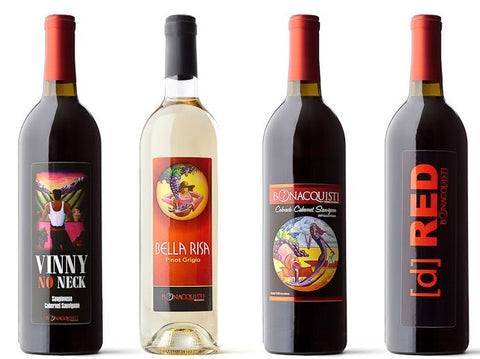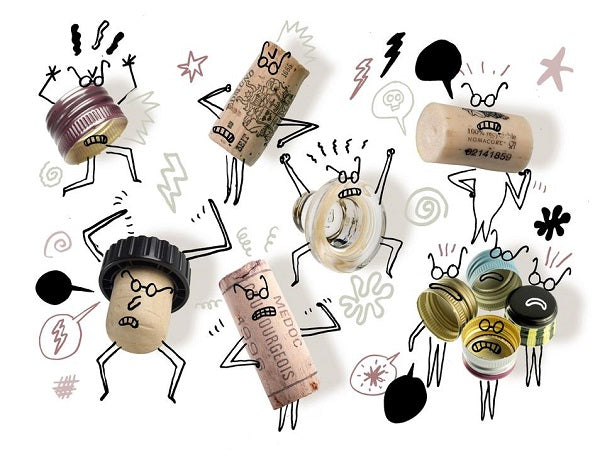"Cork Wars" (aka The Great Cork Debate)
No need to arm yourself with a light-saber for this post, but "Cork Wars" have been a topic of conversation for wine lovers and winemakers for decades (which also has us pausing to wonder if it's a more spirited argument than Sauce vs. Gravy).
The issue is, can synthetic corks top the mighty natural cork as a fine and respected wine closure? Well, we’re here to settle the debate once and for all by declaring a winner in the battle for keeping wine in the bottle until you are ready to enjoy it.
First, a Few Fun Facts (by thewinecellarinsider)
Cork started to become the sealing material of choice in the late 1600’s when it became possible to create glass wine bottles with an almost uniform shape and design. It took until the late 1700’s to create easy to use corkscrews for the wine lover or tavern owner. At that point in history, cork replaced glass wine stoppers, which while they worked well, glass stoppers were not easy to remove without breaking the wine bottle. The pairing of the cork and wine bottle ushered fine wine into the modern age, as from that point forward, wine had the ability to age and evolve in the bottle.
Now that we have a couple of facts down, we'll present our cases:
The Case for Cork:
For the longest time, natural cork’s argument had little to do with anything but tradition. It’s just how the Bordeaux houses have been sealing wine for centuries. That nostalgia wins over those who simply who love to romanticize every aspect of wine, and we get it -- but, we’re here to tell you that there’s a much more compelling argument. It’s green. Harvesting a cork tree is a sustainable form of farming. Cork trees, which can live up to 250 years (most come from Portugal and the Mediterranean). Plus, cork is easily recycled (at Whole Foods for example) and can be turned into flooring, shoes and many other products. Crafty? You can also check our Google for a bevy of nifty arts and crafts projects. Yes, cork taint does happen, but it’s becoming an even more rare occurrence, and these seals let in just a minute bit of oxygen, which can really help a wine age beautifully over time.
The Case for Synthetic:
Man, these products are good. Synthetic cork closures never seem to have cork taint, which is a huge plus, and they're extremely affordable. (If you'd like a refresher definition of cork taint: it's a broad term referring to a wine fault characterized by a set of undesirable smells or tastes found in a bottle of wine, especially spoilage that can only be detected after bottling, aging and opening.) Sure, synthetic corks may not feel right to traditionalists, but they are pretty darn effective, especially when used in wines that don’t need to be cellared for a dozen years.
One awesome bonus about the synthetic corks we use at the winery is they're actually recyclable and can be tossed in your big purple Denver recycling bin.
Ok, now a drawback. In aging, the synthetic material doesn't expand with the bottle and can eliminate all oxygen seepage, which is actually a bad thing for wine’s development. Wine, just like humans need a little oxygen,
The Conclusion
You’re not going to like our ambiguity — especially when we teased you by saying we were going to settle the debate once and for all — but we say there’s room for both (and we use both). Just like there is an occasion for just about every well-made wine, there’s a reason to use both synthetic and the natural stuff.
So stop thinking about it too much, enjoy your wine and find a way to recycle whatever type of cork you wind up with on your countertop - the wine gods will thank you for it!
Cheers!



